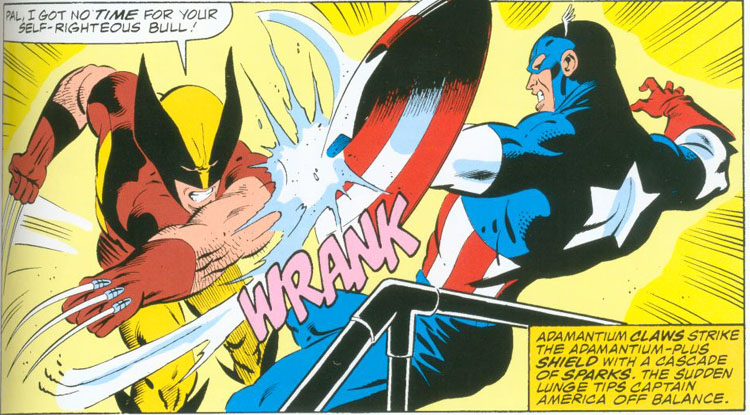You have to keep in mind that Vibranium only absorbs kinetic energy directed into it. If the shield absorbed ALL kinetic energy from any impact, it would be useless as a tool or weapon. Also, Vibranium does not absorb 100% of an impact's kinetic energy, only most of it. Let's speculate!
When Captain America throws his shield at a person or object, keep in mind Newton's First Law:
An object at rest stays at rest and an object in motion stays in
motion with the same speed and in the same direction unless acted upon
by an unbalanced force.
So what you have here is a near-invulnerable object travelling through the air at whatever speed it was thrown. Normally, the only thing that would stop such an object is the outside forces applied against it. In the case of the shield, however, most - but not all - of that outside force is nullified by the properties of the material.
Captain America has obviously learned how hard & fast to throw the shield in order to have it impact an object and still bounce back. In fact, his ability to accurately predict the trajectory of the shield is what makes him one of the few people in the Marvel universe who can wield the shield with any sort of effectiveness. In most people's hands, it would be no more effective than a big, near-invincible Frisbee.
As for transferal of energy, it actually works the opposite of what you're thinking - the material prevents kinetic energy from being transferred through it, not out of it. For instance, when someone like Thor or The Hulk hits Captain America's shield, any other material would transfer that kinetic energy directly into the Captain's body. At the very least, his arm would be shattered, and after that his legs would probably turn into pulp. However, because of the Vibranium's properties most of that energy is negated, resulting in a much smaller impact as far as the Captain's bones & muscles are concerned.

In regards to Newton's Third Law, which states
For every action, there is an equal and opposite reaction.
perhaps we can state that the Vibranium is actually re-directing the energy instead of absorbing it. Obviously, a bit of hand-waving is needed here, but we might speculate that - say 80% - of any kinetic force being applied to the shield is reflected away from the shield, or even back upon its source. This would be supported by a scenario like in Marvel's "The Avengers", where an attacker (in this case, Thor) is knocked backwards at almost the full force of their OWN blow. However, we would then be forced to explain other scenarios - like that in Captain America: Winter Solder - where an opponent strikes the shield with no obvious effect.
We might even go so far as saying that Vibranium is polarized, with one side of the shield having a positive charge and the other having a negative charge. This would attempt to explain why impacts on one side of the shield reflect/re-direct while the other side somehow absorbs/nullifies. However, it's far more likely that both sides react to kinetic energy in the same way.
Of course, even with all this in mind... it's also important to keep in mind that applying real-world physics to a comic book will almost always result in frustration.




